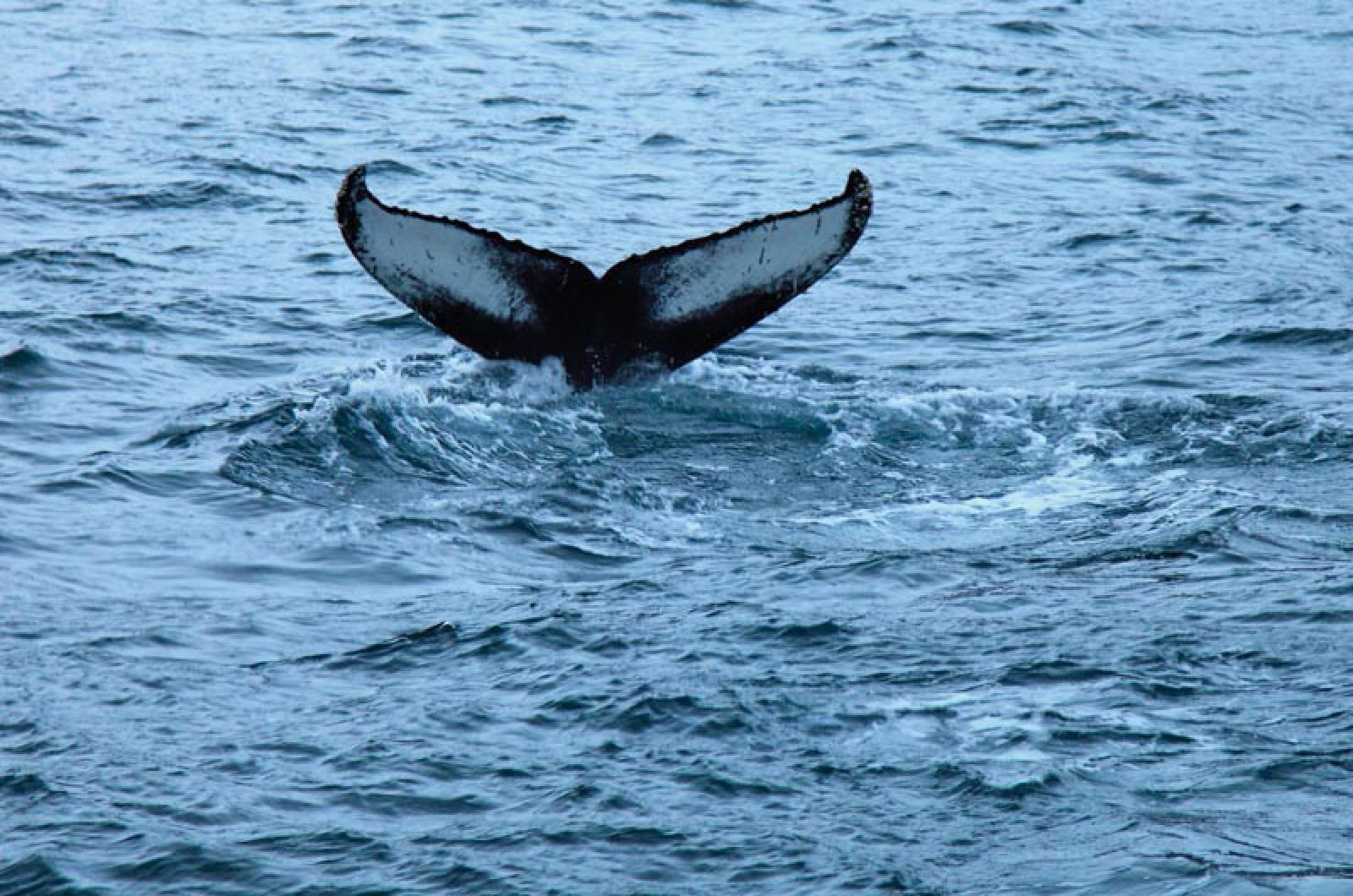It was a Vineyard Sound surprise.
This is not the season for nine guys in crisp button-down shirts and ties to burst out of nowhere and start singing. That delight only happens in the summer when the local a cappella group known for their boisterous ballads drop in and delight folks at random locations on the Island.
However, it must be the season for cetaceans, since a single humpback whale was observed breaching in Vineyard Sound during a recent ferry passage, astonishing passengers and crew alike. While we know these creatures are in our waters, in the last 20 years I have only known of deceased humpbacks washing up on the beach, so the live, healthy version swimming along with the steamship was quite a special event.
The Vineyard Sound guys and humpback whales share a special talent: they can sing. While it was not reported whether last week’s whale was crooning, this species’ penchant for striking up a tune is well known.
Credit Roger Payne for that. It was just over 50 years ago that Mr. Payne, a bio-acoustician (biologist and sound scientist), captured the melodies of humpbacks and made an album called the Songs of the Humpbacks. This work proved a commercial success, becoming the best-selling environmental album in history, and launched the Save the Whales movement of the 1970s, quite possibly saving these creatures from extinction.
For humpback whales, vocalizations can be made by both sexes, but it appears that only males indulge in the magic of melodies. Interestingly, these whales don’t have vocal cords and don’t have to exhale to produce sounds. Humpbacks do have a larynx-like structure in their throat but their sound-making mechanism still remains somewhat of a mystery.
Humpbacks within a given region will sing the same song and, like the Vineyard Sound troupe, they sing their hearts out. The North Atlantic population has its own distinct song, as do the Pacific and other worldwide populations.
The tune can last up to 30 minutes, incorporating tones that some researchers have referred to as “rhymes,” and, then, the whole sequence is sung in a repeating pattern that can go on for hours and hours. Researchers suspect that the male sings to induce estrus in the female and perhaps establish dominance, though much is still unknown.
Learning of songs appear to be culturally transmitted. Even when individuals are separated from the rest of the population, there have been instances of the song changing within a population, and somehow those distant individuals get the memo and start singing the new version. Much to learn indeed!
It may have been a surprise to see one of these vocalists interrupt its repose to shadow a noisy, churning ferry. Less surprising is that when folks first heard Mr. Payne’s recording of humpbacks’ songs, they were brought to tears. All of us should be grateful for his work, which did so much to help ensure that these mysterious melodies were not their swan song.
Suzan Bellincampi is islands director for Felix Neck Wildlife Sanctuary in Edgartown and the Nantucket Wildlife Sanctuaries. She is also the author of Martha’s Vineyard: A Field Guide to Island Nature and The Nature of Martha’s Vineyard.




Comments
Comment policy »